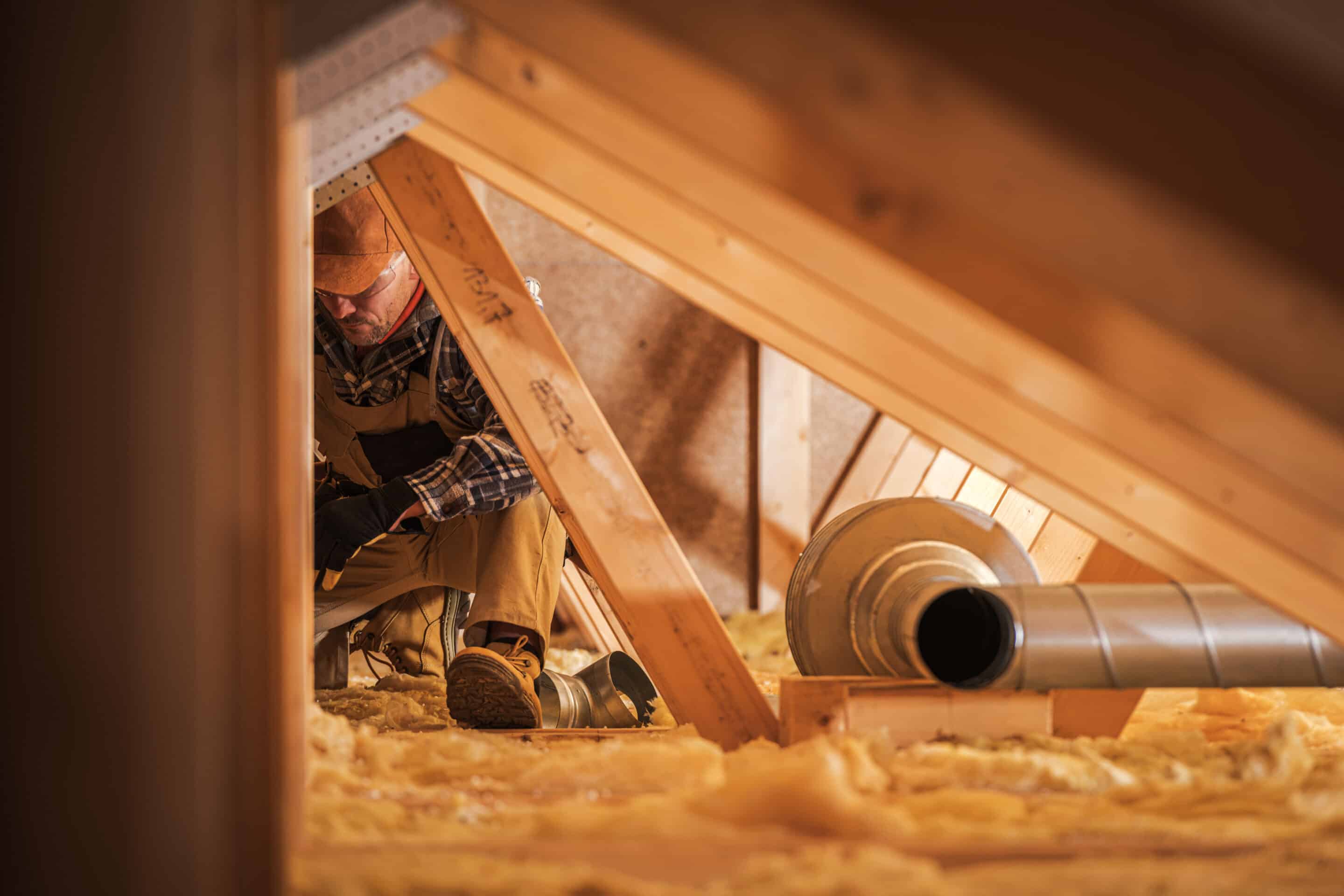

Articles
Why Insulation Is Important
Modified: August 26, 2024
Learn why insulation is crucial for every home. Read our informative articles on the benefits of proper insulation and how it can save you money on energy bills.
(Many of the links in this article redirect to a specific reviewed product. Your purchase of these products through affiliate links helps to generate commission for Storables.com, at no extra cost. Learn more)
Introduction
When it comes to creating a comfortable and energy-efficient environment in our homes, insulation is often an overlooked but essential component. Insulation acts as a barrier to prevent the transfer of heat and noise and plays a crucial role in maintaining temperature levels, reducing energy consumption, and improving overall comfort. Whether you live in a cold climate or a hot one, insulation is a vital aspect of ensuring energy efficiency, cost savings, and a healthy living space.
Proper insulation not only helps to keep our homes warm during winter and cool during summer but also offers a host of other benefits. From reducing noise pollution to preventing moisture buildup, insulation plays a pivotal role in creating a comfortable and healthy living environment. In this article, we will explore the various reasons why insulation is important and why homeowners should consider investing in quality insulation materials and techniques.
Insulation is a key factor in establishing energy efficiency. By preventing heat transfer between the interior and exterior of a building, insulation helps to maintain a stable and comfortable indoor temperature. During cold weather, insulation slows down the escape of heat from the interior, reducing the need for constant heating. Similarly, during hot weather, insulation prevents the entry of heat, reducing the load on cooling systems. By effectively managing temperature levels, insulation significantly reduces the energy required to heat or cool a building, resulting in lower utility bills and a reduced carbon footprint.
Aside from energy efficiency, insulation also offers substantial cost savings. By reducing the reliance on heating and cooling systems, insulation helps to lower energy consumption and, consequently, utility bills. According to the U.S. Department of Energy, homes with proper insulation can save up to 20% on heating and cooling costs. Over time, these savings can add up significantly, making insulation a cost-effective investment for homeowners.
In addition to energy savings and cost efficiency, insulation contributes to overall comfort and health. By creating a barrier against outside temperature extremes, insulation helps to maintain a more comfortable indoor environment. This ensures that occupants can enjoy a cozy and temperate home throughout the year, regardless of the weather conditions outdoors. Moreover, insulation also plays a crucial role in improving indoor air quality. By preventing air leakage and infiltration from the outside, insulation helps to keep out pollutants, allergens, and outdoor noise, creating a healthier living space.
Noise reduction is yet another benefit of insulation. Insulating materials are effective in damping sound vibrations and reducing noise transmission between rooms or from outside sources. This is particularly beneficial for those living in busy urban areas or near noisy roads. Insulation can help create a quieter and more peaceful environment, allowing for a better quality of life and improved sleep.
Moisture control is also a critical aspect of insulation. Proper insulation helps prevent condensation and moisture buildup, which can lead to mold and mildew growth. By creating a barrier against moisture, insulation contributes to a healthier living environment by preventing the spread of allergens and the deterioration of building materials.
Beyond the individual benefits, insulation also has positive environmental implications. By reducing energy consumption, insulation significantly lowers greenhouse gas emissions. It helps to conserve natural resources by decreasing the demand for fossil fuels used in heating and cooling systems. Investing in proper insulation is not only beneficial for homeowners but also contributes to a greener and more sustainable future.
In the next sections, we will delve into the proper techniques of insulation, explore common insulation materials, and provide tips for choosing the right insulation for your home. By understanding the importance of insulation and making informed decisions, homeowners can create a more comfortable, energy-efficient, and eco-friendly living space.
Key Takeaways:
- Insulation is essential for energy efficiency, cost savings, and a healthier living environment. It reduces energy consumption, minimizes noise pollution, and contributes to a more sustainable future.
- Proper insulation techniques and the right materials are crucial for maximizing the benefits of insulation. From fiberglass to spray foam, choosing the right insulation material can significantly enhance a home’s comfort and energy efficiency.
Read more: How Important Is Attic Insulation
Energy Efficiency
One of the primary reasons why insulation is important is its impact on energy efficiency. Insulation acts as a thermal barrier, reducing the transfer of heat between the interior and exterior of a building. This helps to maintain a stable indoor temperature, regardless of the weather conditions outside.
During the winter months, insulation plays a crucial role in preventing the escape of heat from the interior. When a building is properly insulated, it reduces the need for constant heating, as the heat remains trapped inside for longer periods. This, in turn, reduces energy consumption and lowers heating costs. Studies have shown that a well-insulated home can save between 20% and 30% on heating expenses compared to a poorly insulated one.
Similarly, during the hot summer months, insulation helps to block the entry of heat into the building. By preventing unwanted heat gain, insulation reduces the reliance on air conditioning systems, leading to lower energy consumption and cooling costs. A well-insulated home can stay noticeably cooler and more comfortable, even without continuous air conditioning. This not only results in energy savings but also reduces the environmental impact associated with excessive energy use.
Furthermore, proper insulation also prevents thermal bridging. Thermal bridging occurs when heat moves through a building’s structure, bypassing insulation and creating temperature inconsistencies and energy loss. By eliminating thermal bridging, insulation ensures that heat is evenly distributed throughout the building, maximizing energy efficiency.
In addition to reducing energy consumption and costs, energy-efficient insulation helps to reduce greenhouse gas emissions. By decreasing the demand for heating and cooling systems, insulation lowers the reliance on fossil fuels, reducing carbon dioxide and other harmful emissions. This contributes to a greener and more sustainable environment.
It is important to note that energy efficiency is not only beneficial for homeowners but also for society as a whole. By reducing energy consumption, the demand for energy production is decreased, allowing resources to be allocated more efficiently. This can lead to a more stable and reliable energy grid and a reduction in the need for new power plants.
Overall, insulation is a critical component of energy-efficient design. It helps to maintain a comfortable and stable indoor temperature, reduces energy consumption and costs, and contributes to a greener and more sustainable future. Investing in quality insulation materials and proper insulation techniques is a wise decision for homeowners looking to create an energy-efficient living space.
Cost Savings
In addition to improving energy efficiency, insulation also offers significant cost savings for homeowners. By reducing the need for constant heating and cooling, insulation helps to lower energy consumption and, consequently, utility bills.
Heating and cooling costs can account for a significant portion of a household’s overall expenses. However, with proper insulation, these costs can be significantly reduced. According to the U.S. Department of Energy, homes with insufficient insulation can lose up to 20% of their conditioned air through air leaks. This means that a considerable amount of energy is wasted, leading to higher energy bills. By investing in insulation, homeowners can effectively decrease these energy losses and subsequently reduce their heating and cooling expenses.
Furthermore, proper insulation also helps to ensure that the energy produced is used more efficiently. Without insulation, the heating or cooling system needs to work harder and run for longer periods to maintain a comfortable indoor temperature. This results in increased energy consumption and higher costs. However, with proper insulation, the system doesn’t have to work as hard to achieve the desired temperature, leading to energy savings and cost reductions.
Over time, the cost savings from insulation can be substantial. By reducing energy consumption, homeowners can potentially save hundreds or even thousands of dollars each year on their heating and cooling bills. These savings can free up funds for other household expenses or be invested in further energy-saving measures.
Furthermore, investing in insulation can also increase the overall value of the property. Energy-efficient homes are in high demand in today’s market, and buyers are increasingly looking for homes with low utility costs. A well-insulated home not only offers lower energy bills but also provides the assurance of a comfortable living environment. This can make the property more attractive to potential buyers, potentially leading to a higher resale value.
It is worth noting that the cost of insulation installation can vary depending on factors such as the size of the home, the type of insulation material used, and the professional labor involved. However, the long-term cost savings achieved through reduced energy consumption far outweigh the initial investment. In many cases, the savings on energy bills can recoup the cost of insulation within a few years.
Additionally, there may be government incentives or rebate programs available to homeowners who choose to invest in energy-efficient insulation. These incentives can further offset the upfront costs and improve the overall financial benefit of insulation.
Overall, insulation provides significant cost savings for homeowners. By reducing energy consumption and utility bills, insulation offers long-term financial benefits and can contribute to a more sustainable and financially sound living environment.
Comfort and Health
Insulation plays a crucial role in enhancing both the comfort and health of a living space. By creating a thermal barrier, insulation helps to maintain a stable and comfortable indoor temperature throughout the year, regardless of the weather conditions outside.
During the winter months, insulation prevents heat from escaping the interior, keeping the home warm and cozy. This eliminates cold spots and drafts, creating a more comfortable living environment. Insulation also helps to maintain a consistent temperature from room to room, ensuring that every part of the house is equally comfortable.
Similarly, during the hot summer months, insulation blocks the entry of heat into the home, helping to keep the indoor temperature cooler. This reduces the reliance on air conditioning systems and provides a more comfortable living space, even during scorching heatwaves.
In addition to temperature control, insulation also contributes to better indoor air quality. Properly installed insulation helps to prevent air leaks and infiltration from the outside, thereby reducing the entry of pollutants, allergens, and outdoor noise. This creates a healthier and more enjoyable living space, particularly for individuals suffering from allergies or respiratory conditions.
Insulation also plays a role in moisture control and preventing mold and mildew growth. By acting as a moisture barrier, insulation helps to prevent condensation and excess humidity from building up inside the walls. This reduces the risk of mold growth, which can lead to health problems such as respiratory issues, allergies, and even structural damage to the building.
In addition to physical comfort, insulation also contributes to sound absorption and noise reduction. Insulating materials have the ability to dampen sound vibrations and reduce noise transmission from outside sources or between different rooms within the home. This creates a quieter and more peaceful living environment, allowing for better concentration, relaxation, and improved sleep quality.
Another aspect of comfort and health that insulation addresses is the issue of drafts. Insulation helps to seal gaps and cracks in the building envelope, preventing air leaks and drafts. This not only improves comfort but also reduces energy waste and lowers utility bills.
Furthermore, the thermal barrier created by insulation helps to regulate temperature fluctuations, reducing the need for extreme temperature adjustments. This contributes to a more consistent and comfortable living environment, eliminating the need for constantly adjusting thermostats and heating or cooling systems.
Overall, insulation significantly enhances the comfort and health of a living space. By providing temperature control, improving indoor air quality, reducing noise transmission, and preventing drafts and moisture buildup, insulation creates a more enjoyable and healthier home environment for occupants.
Noise Reduction
One often overlooked benefit of insulation is its ability to reduce noise within a home. Insulation materials have sound-absorbing properties that help to dampen sound vibrations and prevent noise from traveling between rooms or from outside sources.
Noise pollution can have a significant impact on our well-being and quality of life. Living in a noisy environment can cause stress, disrupt sleep, and affect concentration and productivity. Insulation acts as a barrier, reducing the transmission of sound waves and creating a quieter and more peaceful living space.
Exterior noises, such as traffic, loud neighbors, or construction work, can be intrusive and disruptive to our daily lives. By installing insulation, homeowners can significantly reduce the amount of noise that enters their living spaces. Insulation materials, such as fiberglass or cellulose, are effective in absorbing sound vibrations and minimizing their transmission into the home. This is particularly beneficial for those living in busy urban areas or near major roadways.
Insulation also helps to contain noise within a home, preventing it from traveling between rooms. This is especially important for homes with multiple occupants or shared living spaces. Insulating interior walls and floors can help to create a more acoustically isolated environment, allowing each room to maintain its privacy and minimizing the disturbance caused by everyday activities.
Rooms that require extra soundproofing, such as home theaters, music studios, or offices, can benefit from specialized soundproofing insulation materials. These materials are designed to provide enhanced noise reduction, allowing for a more immersive audio experience or a quieter workspace.
Furthermore, insulation can also help to muffle and dampen internal noises, such as footsteps, plumbing, or HVAC system sounds. By absorbing and reducing these noises, insulation creates a more comfortable and peaceful living environment.
It is important to note that while insulation can significantly reduce noise, it may not eliminate it entirely. Complete noise elimination often requires a combination of insulation techniques, such as sealing gaps and cracks, using acoustic panels, and incorporating soundproofing barriers for maximum effectiveness.
By reducing noise pollution, insulation contributes to a better quality of life. A quieter living space promotes relaxation, improves sleep quality, enhances concentration and productivity, and allows for a more enjoyable and peaceful home environment.
Overall, insulation’s ability to reduce noise transmission and create a quieter living space is an important and often underestimated benefit. By choosing the right insulation materials and techniques, homeowners can significantly improve the acoustic comfort of their homes.
Proper insulation can help reduce energy costs by maintaining a consistent temperature in your home, so be sure to insulate your walls, attic, and basement.
Read more: Why Plumbing Is Important
Moisture Control
Moisture control is a critical aspect of insulation and plays a vital role in maintaining a healthy and structurally sound home. Proper insulation helps to prevent the buildup of moisture and condensation within the walls, which can lead to mold growth, deterioration of building materials, and potential health problems for occupants.
Condensation occurs when warm, humid air comes into contact with cold surfaces. Without insulation, condensation can form on the interior surfaces of walls, floors, and ceilings, leading to the growth of mold and mildew. These fungi can release spores into the air, which can cause respiratory issues, allergies, and other health problems. In addition, prolonged exposure to mold can lead to structural damage and reduce the overall durability of a building.
Insulation acts as a barrier against thermal bridging, which occurs when heat moves through a building’s structure and bypasses insulation. Insulation helps to maintain the temperature of internal surfaces, reducing the chance of condensation forming on them. By preventing condensation, insulation mitigates the risk of mold growth and keeps the environment healthy.
Furthermore, insulation materials such as fiberglass, rock wool, and spray foam are inherently resistant to moisture. These materials do not absorb water and are not prone to mold growth themselves. This ensures that the insulation itself remains effective and does not become a breeding ground for mold or other bacteria.
In addition to preventing condensation, insulation also helps to control moisture from outside sources. Properly installed insulation can act as a moisture barrier, preventing water infiltration through walls or roof surfaces. This is particularly important in areas prone to heavy rainfall or high humidity, where water penetration can cause significant damage to the building’s structure and promote mold growth.
Insulation also helps to maintain the relative humidity levels within a home, preventing excessive moisture buildup. By reducing the entry of humid outdoor air and controlling the circulation of indoor air, insulation helps to create a more balanced and controlled environment.
It is important to note that insulation alone is not a solution for moisture issues caused by leaks, plumbing failures, or excessive humidity. Proper ventilation, drainage systems, and moisture management strategies are also essential components of a comprehensive moisture control plan. By addressing all these factors together, homeowners can ensure an effective moisture control strategy that protects both the home and the health of its occupants.
Overall, insulation plays a crucial role in moisture control by preventing condensation, reducing water infiltration, and maintaining a healthy living environment. By investing in proper insulation techniques and materials, homeowners can effectively protect their homes from mold growth, structural damage, and potential health issues associated with excessive moisture.
Environmental Benefits
Insulation not only benefits homeowners but also has several positive environmental impacts. By reducing energy consumption, insulation helps to conserve natural resources and minimize the carbon footprint associated with heating and cooling systems.
One of the significant environmental benefits of insulation is its ability to reduce greenhouse gas emissions. Heating and cooling systems account for a large portion of energy use in residential buildings, and a significant amount of this energy is derived from fossil fuels. By investing in proper insulation, homeowners can significantly decrease their energy consumption and reliance on these non-renewable resources. This, in turn, reduces the release of carbon dioxide and other harmful greenhouse gases into the atmosphere, contributing to the fight against climate change.
In addition to reducing greenhouse gas emissions, insulation also helps to conserve natural resources. By using less energy to heat and cool a building, less demand is placed on power plants, which rely on the extraction and burning of fossil fuels. By decreasing the demand for these resources, insulation helps to preserve valuable natural resources such as oil, gas, and coal.
Furthermore, insulation also plays a role in reducing the urban heat island effect. In densely populated areas, buildings and pavement can absorb and radiate heat, leading to increased ambient temperatures. This effect can result in higher energy consumption for cooling, increased air pollution, and decreased air quality. Insulation helps to mitigate this effect by reducing heat transfer into the building, thereby decreasing the need for excessive cooling.
Another environmental benefit of insulation is its contribution to sound environmental building practices. Insulated homes tend to be more energy-efficient, making them eligible for green building certifications such as LEED (Leadership in Energy and Environmental Design). These certifications recognize and promote sustainable building practices, including energy efficiency, resource conservation, and environmental responsibility.
Additionally, insulation can also extend the lifespan of a building by protecting it from moisture damage and maintaining structural integrity. This reduces the need for premature building replacements, further conserving resources and reducing waste. Insulation’s contribution to moisture control also prevents the release of potentially harmful mold spores into the environment, promoting indoor air quality and creating a healthier living environment.
By improving energy efficiency, reducing greenhouse gas emissions, conserving natural resources, and promoting sustainable building practices, insulation plays a significant role in creating a greener and more environmentally friendly future. Homeowners who invest in proper insulation contribute to a more sustainable and responsible approach to energy consumption and building practices.
Proper Insulation Techniques
To ensure the maximum effectiveness of insulation, it is essential to follow proper techniques during installation. Proper insulation techniques help to minimize heat loss or gain, prevent air leakage, and create a complete thermal barrier. Here are some key techniques to consider:
- Air Sealing: Before installing insulation, it is crucial to seal any gaps, cracks, and openings in the building envelope. This helps to prevent air leakage, which can significantly reduce the efficiency of insulation. Common areas that require air sealing include around windows and doors, electrical outlets, and plumbing penetrations. Proper air sealing ensures that insulation works effectively by minimizing the infiltration of outdoor air and the escape of conditioned air.
- Proper Installation: Insulation should be installed properly to avoid compression, gaps, or voids. These issues can compromise the effectiveness of insulation and lead to thermal bridging and energy loss. Different insulation materials have specific installation requirements, and it is essential to follow the manufacturer’s instructions or consult with a professional to ensure proper installation.
- Vapor Barrier: In some climates, the use of a vapor barrier is recommended to prevent moisture buildup within wall cavities. A vapor barrier helps to control the movement of water vapor and prevent condensation. It is typically installed on the warm side of the insulation, facing the interior of the building. However, in certain situations, such as hot and humid climates, vapor barriers may not be necessary, and a vapor retarder can be used instead.
- Proper Ventilation: Adequate ventilation is crucial to maintaining proper indoor air quality and preventing moisture issues. Properly ventilated attics, basements, and crawl spaces help to control humidity levels and prevent condensation. A well-ventilated attic, for example, can reduce the risk of ice dams and moisture buildup, which can lead to roof damage and mold growth. It is important to assess the ventilation needs of each area and ensure that proper ventilation is installed in conjunction with insulation.
- Adequate Thickness: To achieve optimal thermal performance, insulation should be installed at the recommended thickness. Each insulation material has a specific R-value, which is a measure of its thermal resistance. The R-value needed depends on the climate zone and the specific requirements of the building. It is important to consult local building codes and energy efficiency guidelines to determine the appropriate R-values for your area.
- Proper Coverage: Insulation should be installed to provide complete coverage, especially in areas prone to air leakage or thermal bridging. This includes insulating walls, floors, ceilings, and the roof. In addition, attention should be given to insulating around windows and doors, as well as ensuring that insulation is properly installed in corners and edges. This helps to create a continuous thermal barrier and maximize energy efficiency.
It is important to note that insulation installation can be complex, and it may be beneficial to consult with a professional insulation contractor. They can assess your specific needs, offer guidance on insulation materials and techniques, and ensure that all local building codes and guidelines are followed.
By adhering to proper insulation techniques, homeowners can maximize the effectiveness of insulation, create a complete thermal barrier, and achieve optimal energy efficiency and comfort in their homes.
Common Insulation Materials
There are several different types of insulation materials available, each with its own unique properties and benefits. The choice of insulation material depends on factors such as the desired R-value, the specific application, and budget considerations. Here are some of the most common insulation materials:
- Fiberglass: Fiberglass insulation is one of the most widely used and familiar insulation materials. It is made from fine glass fibers and is available in batts, rolls, or loose-fill forms. Fiberglass insulation is non-combustible, resists mold and mildew, and offers excellent thermal resistance. It is relatively affordable and easy to install, making it a popular choice for both new construction and retrofit projects.
- Cellulose: Cellulose insulation is made from recycled paper products, such as newspapers and cardboard, treated to resist fire and pests. It is available in loose-fill or blown-in form and is installed using special equipment. Cellulose insulation provides excellent thermal performance and sound absorption. It is an eco-friendly option that offers good resistance to air leakage and is suitable for both attics and wall cavities.
- Spray Foam: Spray foam insulation is a versatile and high-performance option that offers excellent thermal resistance and air sealing properties. It is applied as a liquid that expands and hardens into a foam, conforming to the shape of the space. Spray foam insulation fills gaps, seals cracks, and provides an airtight barrier. It can be used in various applications, including walls, attics, and crawl spaces. There are two types of spray foam insulation: open-cell and closed-cell. Open-cell foam is less dense and more flexible, while closed-cell foam is denser and provides higher R-values.
- Rigid Foam: Rigid foam insulation, also known as foam board, is a lightweight and durable option that offers excellent thermal resistance. It is available in panels or boards that can be cut to size and installed in various applications, such as walls, roofs, and foundations. Rigid foam insulation provides good moisture resistance and can help prevent thermal bridging. It is commonly used in new construction and as an option for retrofitting existing buildings.
- Mineral Wool: Mineral wool is made from molten rock or slag spun into fibers. It is available in batts or loose-fill form and provides good thermal and sound insulation properties. Mineral wool is fire resistant and offers good moisture resistance. It is commonly used in areas where fire resistance or sound control is a priority, such as around chimneys or between floors in multi-story buildings.
- Polyurethane Foam: Polyurethane foam insulation is a high-performance option that provides excellent thermal resistance. It is typically available in a two-component system that is mixed onsite and applied as a foam. Polyurethane foam forms a strong and durable insulation layer that adheres to surfaces, providing superior air sealing and moisture resistance. It is commonly used in commercial buildings and for insulating roofs, walls, and foundations.
When choosing an insulation material, it is important to consider factors such as the desired R-value, the specific application, potential moisture concerns, and any special requirements of the building. Consulting with a professional insulation contractor can help determine the most suitable insulation material for your specific needs.
It is worth noting that insulation materials should be installed according to manufacturer’s instructions and local building codes to ensure their effectiveness and avoid any safety issues.
Each of these common insulation materials offers its own set of advantages and considerations, and selecting the right one can greatly contribute to creating a thermally efficient and comfortable living space.
Read more: Why HVAC Is Important
Conclusion
Insulation is a critical component of any home or building, offering a wide range of benefits and playing an important role in creating a comfortable, energy-efficient, and healthy living environment. From improving energy efficiency and reducing costs to enhancing comfort and reducing environmental impact, insulation has a significant impact on both homeowners and the planet.
The importance of insulation is evident in its ability to enhance energy efficiency. By creating a thermal barrier, insulation helps to maintain a stable indoor temperature, reducing the need for constant heating or cooling. This results in significant energy savings, reduced utility bills, and a reduced carbon footprint. Insulation also helps to minimize thermal bridging and creates a more comfortable living environment by providing consistent temperatures throughout the home.
In addition to energy efficiency, insulation also offers considerable cost savings. By reducing energy consumption, homeowners can experience significant reductions in heating and cooling costs. Over time, these savings can add up, making insulation a cost-effective investment. Moreover, a well-insulated home can increase property value and attract potential buyers who seek energy-efficient homes with low utility costs.
Insulation significantly contributes to both the comfort and health of a living space. By creating a barrier against heat transfer, insulation helps to maintain a comfortable indoor temperature throughout the year. Moreover, insulation improves indoor air quality by preventing the infiltration of pollutants, allergens, and outdoor noise. This creates a healthier living environment, particularly for individuals with allergies or respiratory conditions. Insulation also reduces noise transmission, providing a quieter and more peaceful home environment.
Proper insulation techniques, such as air sealing and adequate coverage, are important for achieving optimal results. By ensuring proper installation and following recommended guidelines, homeowners can maximize the effectiveness of insulation and create a complete thermal barrier. Choosing the right insulation materials, such as fiberglass, cellulose, spray foam, or rigid foam, is crucial for meeting specific needs and achieving desired R-values.
Insulation also offers significant environmental benefits by reducing greenhouse gas emissions, conserving natural resources, and supporting sustainable building practices. By decreasing energy consumption and reliance on non-renewable resources, insulation contributes to a greener and more sustainable future.
In conclusion, insulation is a vital component of any home or building. It not only improves energy efficiency, reduces costs, and enhances comfort and health but also has positive environmental impacts. Proper insulation techniques and the selection of suitable insulation materials are essential for maximizing the benefits. By investing in insulation, homeowners can create a more comfortable, efficient, and environmentally responsible living space for themselves and future generations.
Frequently Asked Questions about Why Insulation Is Important
Was this page helpful?
At Storables.com, we guarantee accurate and reliable information. Our content, validated by Expert Board Contributors, is crafted following stringent Editorial Policies. We're committed to providing you with well-researched, expert-backed insights for all your informational needs.

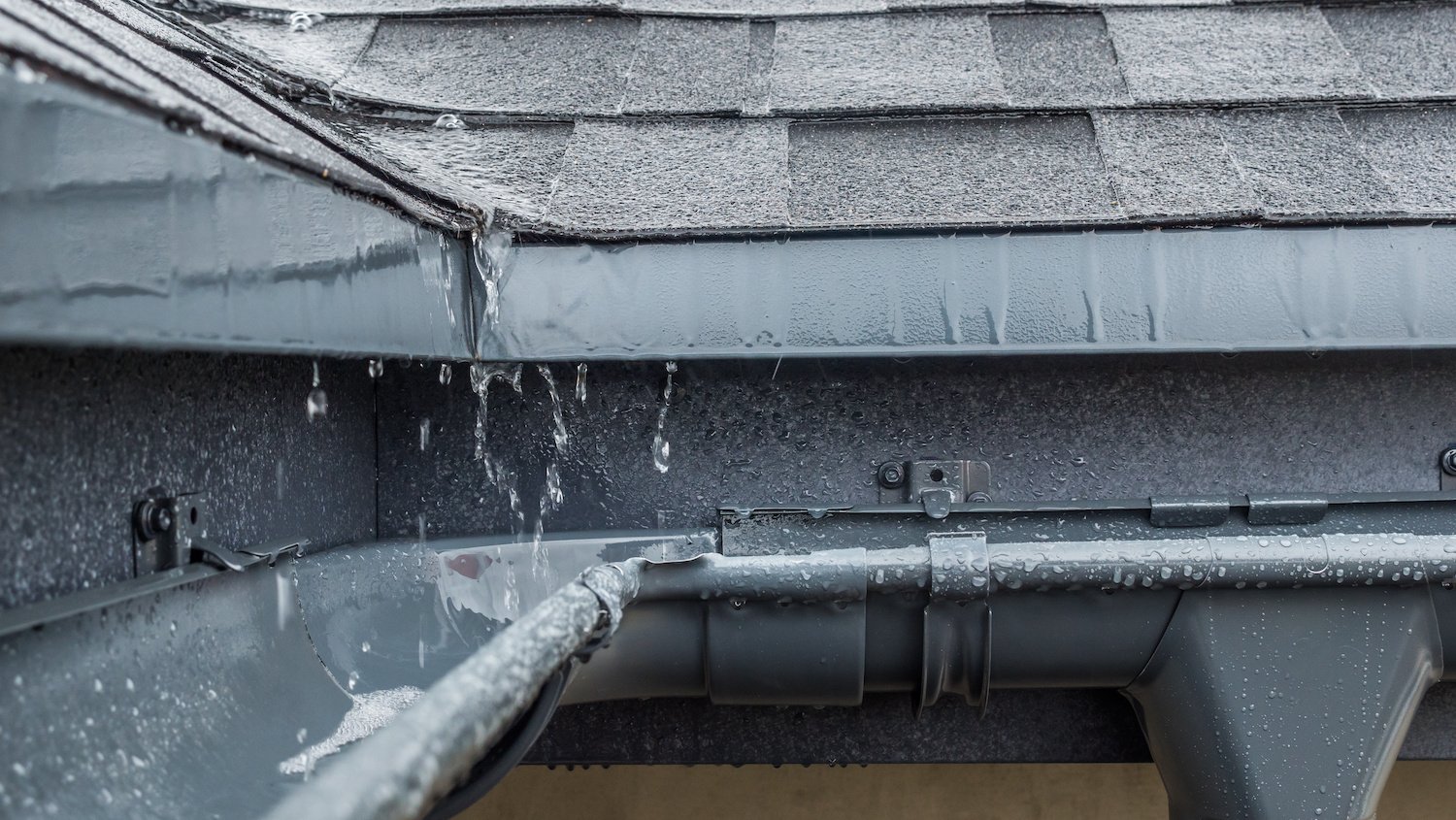
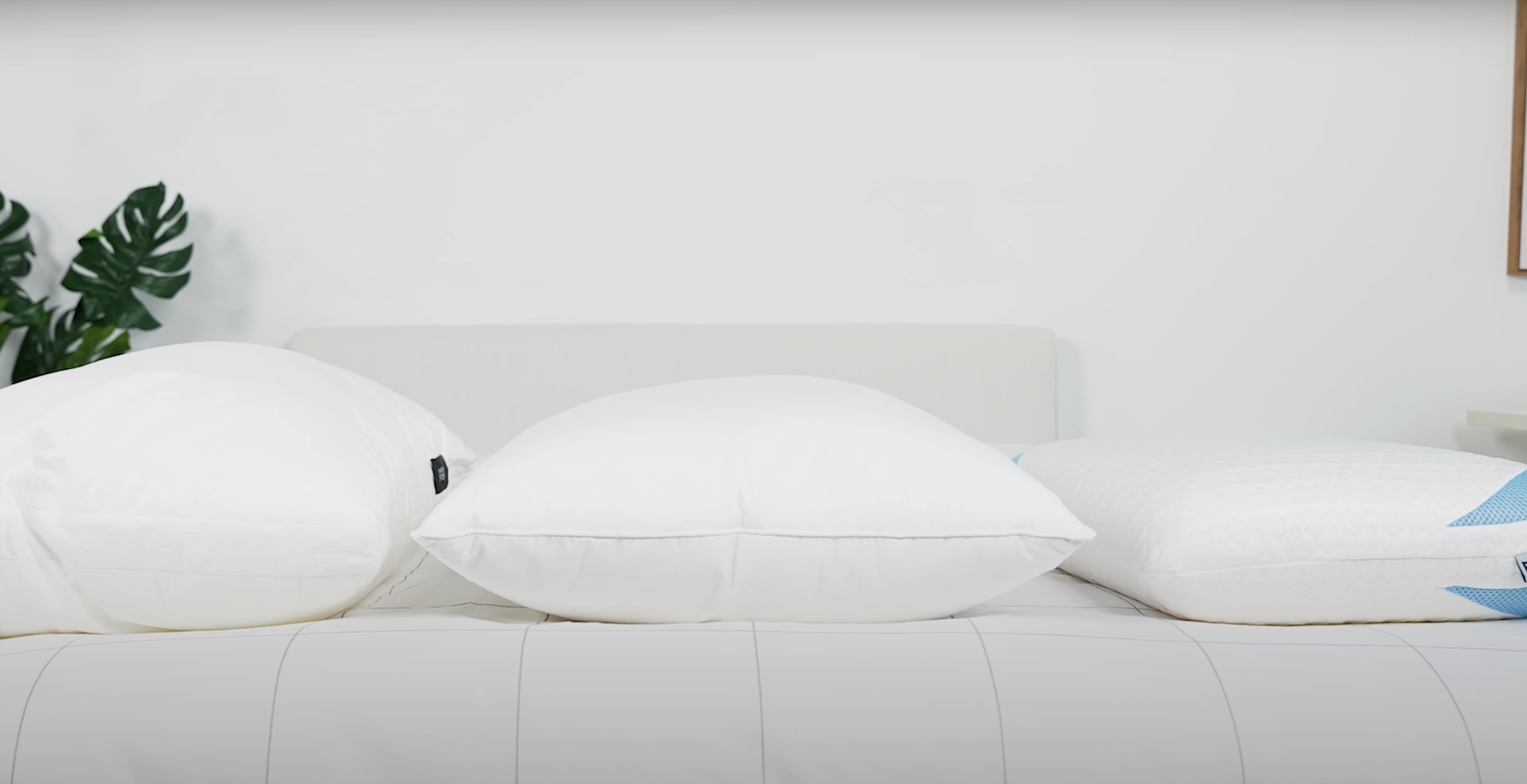
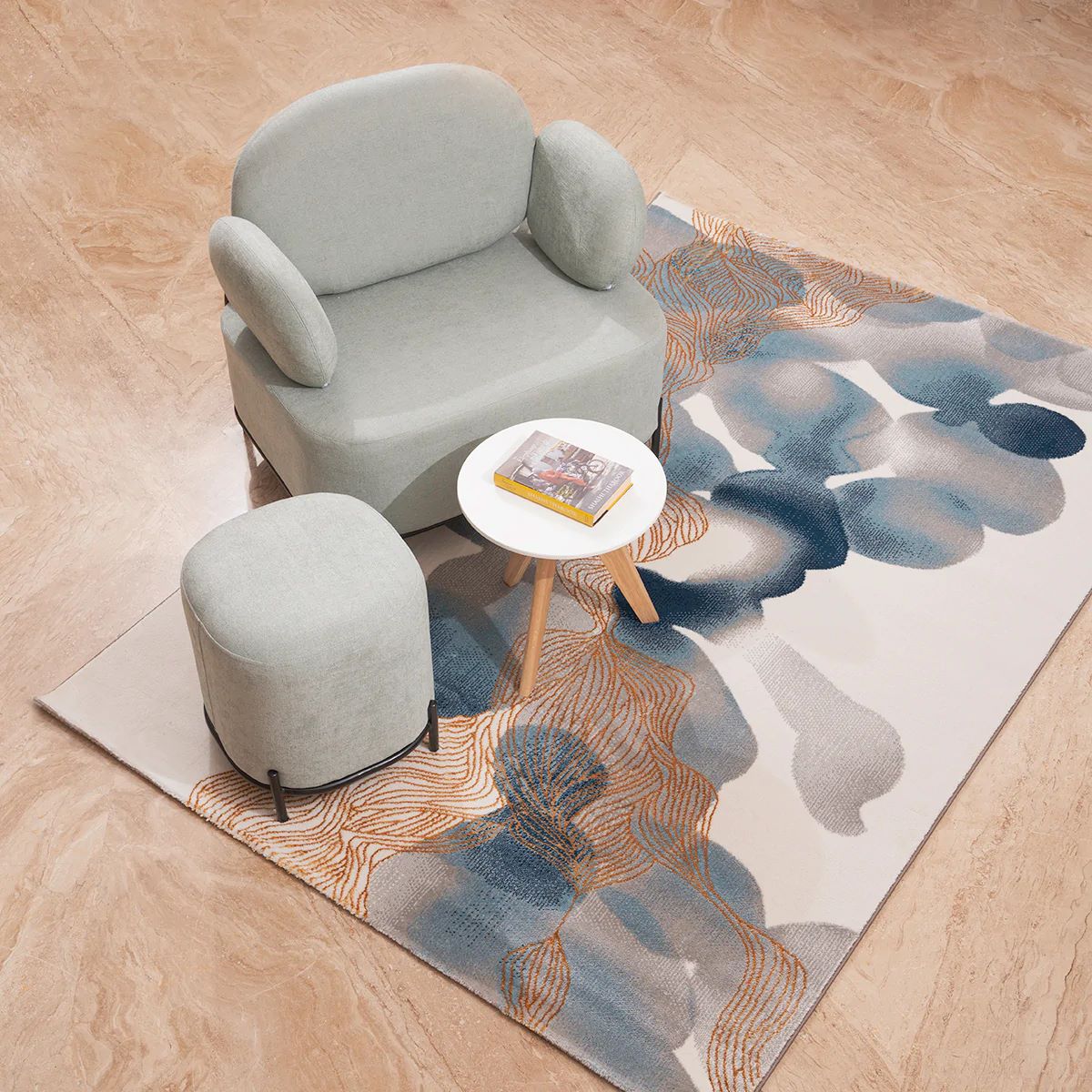




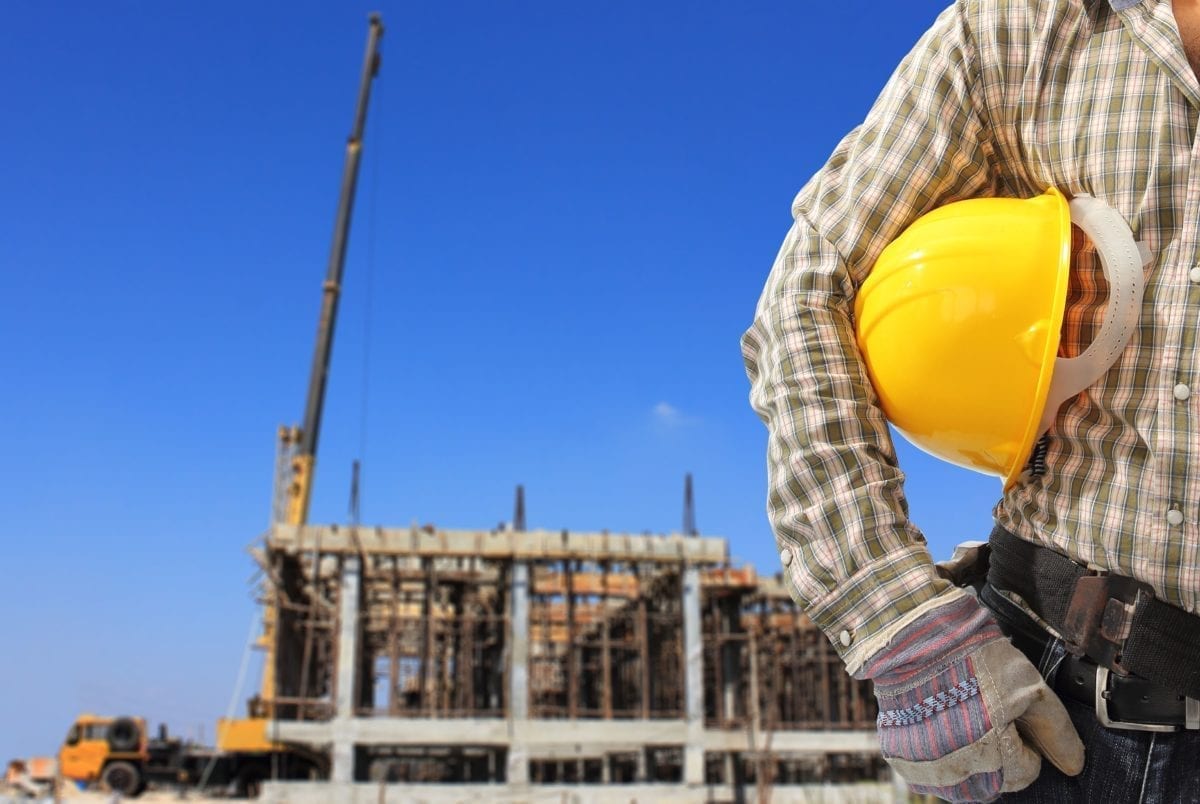


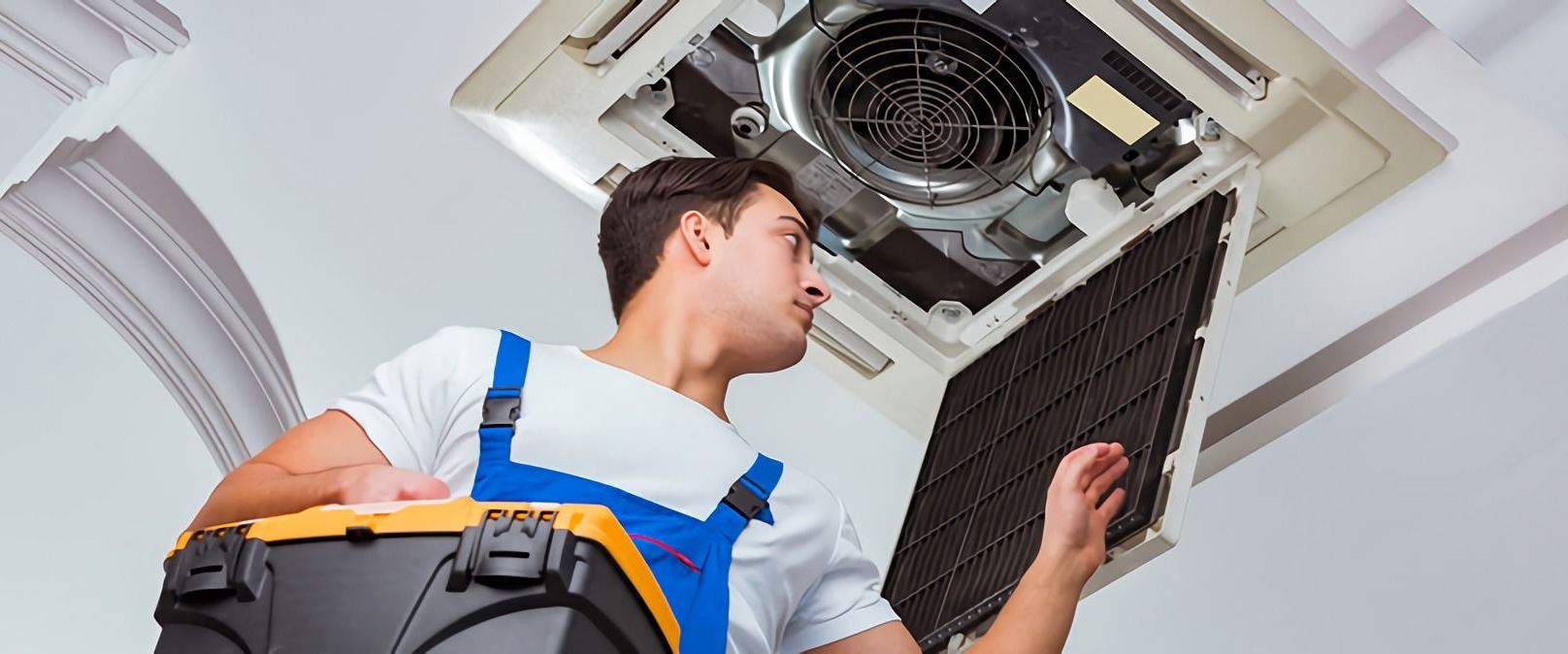


0 thoughts on “Why Insulation Is Important”